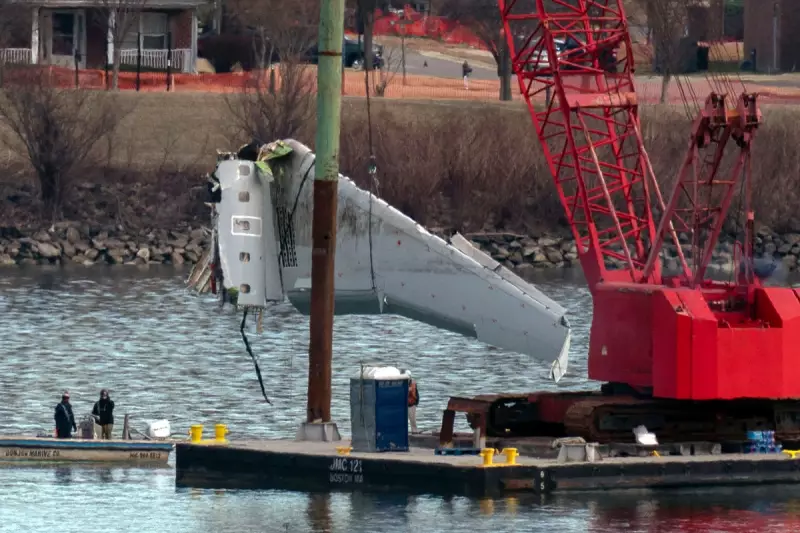
Sharp Rise in Military Aviation Incidents Sparks Congressional Concern
Internal Pentagon figures have revealed a dramatic increase in serious military aircraft accidents during the 2024 budget year, with disturbing evidence suggesting the trend continues into 2025. According to exclusive data obtained by The Associated Press, the rate of severe aviation mishaps across all military branches has surged by 55% compared to four years earlier.
The Marine Corps experienced the most alarming deterioration in safety records, with their accident rate nearly tripling over the same period. The statistics, provided to Senator Elizabeth Warren's office and shared with AP, track Class A mishaps - the most serious category of accidents that result in fatalities, permanent disabilities or aircraft destruction.
High-Risk Aircraft and Operational Pressures
Analysis of the defence data identifies several aircraft types experiencing particularly worrying safety trends. The V-22 Osprey tilt-rotor aircraft, which has been involved in multiple fatal incidents, remains among the most dangerous military platforms currently in service.
Other concerning statistics reveal the Apache helicopter's Class A accident rate increased approximately 4.5 times compared to four years earlier, while the workhorse C-130 transport plane nearly doubled its accident rate over the same period.
Aviation expert and former military pilot John Nance explained that multiple factors are contributing to the deteriorating safety record. "The safety buffer is impacted by a million things," Nance stated. "Whether we're talking about the end of Afghanistan, deployments to Djibouti, or the back and forth across Saudi Arabia, as the pace of military operations ticks up, the mishaps are going to tick up."
Human Cost and Congressional Response
The human impact of this safety crisis became starkly evident during the first ten months of the 2024 budget year, where 25 service members and Defence Department civilian employees lost their lives in aviation accidents. During the same period, 14 military aircraft were completely destroyed.
Massachusetts Democrat Senator Elizabeth Warren, who requested the data following a series of deadly Osprey incidents, told AP: "These accident rates are incredibly troubling and demand action. Legislative changes to make accident reports more accessible are desperately needed so Congress can understand the root causes of these accidents to save service member lives."
The Pentagon has not responded to requests for comment about these alarming trends. Meanwhile, Navy-specific data shows an even more pronounced deterioration in 2025, with Class A aviation mishaps increasing from eight incidents in 2024 to fourteen this year.
Recent High-Profile Incidents Highlight Ongoing Concerns
Although the official data doesn't extend into 2025, several high-profile aviation accidents this year have maintained the worrying pattern. In January, a collision between an Army helicopter and a passenger jet over Washington, D.C., resulted in 67 fatalities. Subsequent investigations identified multiple failures, including a broken altimeter on the Black Hawk helicopter, issues with the pilot's night vision goggles, and unaddressed safety warnings from aviation authorities.
The spring brought further incidents aboard the USS Harry S. Truman aircraft carrier, which lost two F/A-18 Super Hornet fighter jets within weeks - one from a faulty landing and another that slipped off the deck into the sea. In December 2024, the guided-missile cruiser USS Gettysburg mistakenly shot down an F/A-18 from a carrier, though no aviators died in these particular episodes.
More recently, September saw four US Army soldiers from an elite night operations team die when their Black Hawk helicopter crashed during a training mission near a Washington state military base. October witnessed both a fighter jet and helicopter from the USS Nimitz crashing into the South China Sea within thirty minutes of each other, though fortunately without fatalities.
Experts suggest the COVID-19 pandemic's disruption to military training may be contributing to the current safety crisis. The significant reduction in flying hours during the pandemic potentially eroded the safety margins that normally protect against such incidents.
Senator Warren's office is now seeking more comprehensive data from the Pentagon, requesting detailed figures from 2019 through 2025 covering not just Class A mishaps but also less serious Class B and C incidents. The expanded inquiry will also examine military training protocols for aircrews and maintenance staff as Congress intensifies its scrutiny of this developing defence safety emergency.





